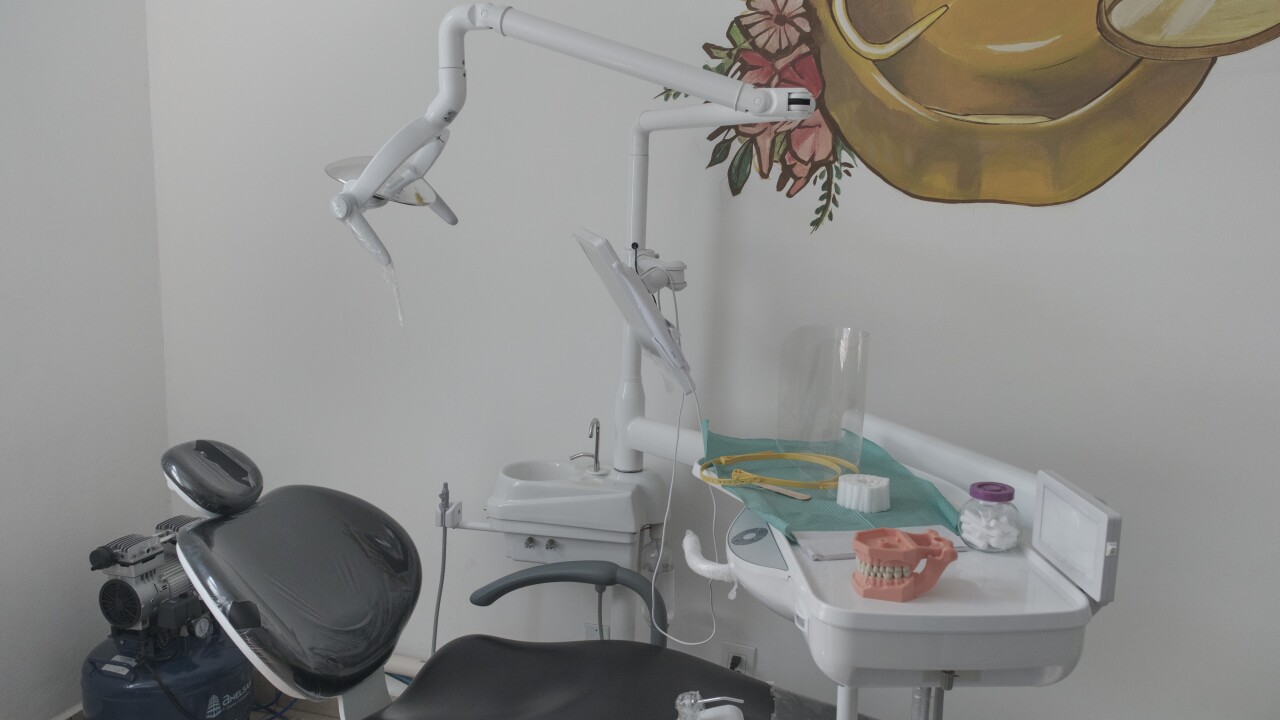Two payments industry veterans have come up with a way to make mobile phones and terminals communicate wirelessly without a conventional wireless or Near Field Communication signal.
The Loop Fob and Loop ChargeCase send a magnetic transmission to a payment terminal's mag-stripe reader through a process dubbed Magnetic Secure Transmission, or MST. Loop turns the mag stripe reader into a receiver, without requiring changes to the terminal's hardware or software.
"It's probably better than with magnetic swipe," George Wallner, Loop chief technology officer, says in an interview. "We provide a cleaner, better transmission than comes out of the mag swipe."
Wallner, who's credited with pioneering mag stripe readers in the 1980s as CEO of Hypercom, developed MST late last year. He's working with Will Wang Graylin, who helped design mobile payments technology at Roam Data.
Last month, Graylin and Wallner changed the name of their company from ActPay to Loop, and they introduced their two products today.
With both Loop devices, users select a card to use, place the mobile phone or device near the credit card reader and press the transmit button on the screen or device. The credit card terminal detects the signal and accepts the transmission.
The MST technology in the fob and case generates changing magnetic fields over a short time. It's accomplished by putting alternating current through an inductive loop, which the magnetic read head of a card reader can receive. The transmission emulates the magnetic field change over time as when a mag stripe card is swiped across the same read head.
Loop works within 4 inches of the read head, and the field dissipates rapidly beyond that point. The device generates a magnetic field only when a user initiates a transmission.
The devices work with 90% of terminals but aren't compatible with ATMs or gasoline pumps, Wallner says. The company made its first successful consumer transaction at Beacon Grill in Woburn, Mass., in March.
It's testing 100 Loop Fob prototypes and 100 ChargeCases. Full-scale production could begin around the first of the year.
Loop plans to sell the fobs on cards near the point of sale. The devices could come already loaded with the merchant's loyalty and rewards programs.
Independent sales organizations could promote the devices to merchants in exchange for a share of the revenue generated by the marketing programs that Loop plans to load onto the devices, Wallner says.
The Loop Fob, a small audio jack device with a built-in card reader, stores encrypted card data on a secure memory module. A microprocessor and a magnetic induction loop enable users to transmit card data to just about any merchant card reader.
The $34 fob will be compatible with iOS and Android devices, but not right away. Loop expects to publish its iOS app in December, and the Android app will be available in the first quarter next year.
The fob transmits card data while attached to a phone or on its own without a phone. It also loads cards onto a mobile phone.
The $99 Loop ChargeCase, a protective case that provides a secure wallet, also delivers up to 60% more battery power for an iPhone 5 or 5s. It comes with an audio jack mag stripe reader that consumers use to load mag stripe data into the Loop device.
Consumers can swipe all of their cards to store on a secure chip in the ChargeCase with an audio jack reader that the company provides or with the integrated card reader on the fob.
"This is in contrast to NFC, where you have to go to a bank and have cards downloaded," Wallner says. "NFC's so complicated that it hasn't taken off."
Moreover, the Loop devices accept any card, unlike NFC-powered mobile wallets that offer only a few cards, notes Damien Balsan, who joined Loop after leading a point of sale team at PayPal.
"These [NFC] wallets were conceived with the wrong mindset," Wallner says. "They're trying to use wallets to control cards. With Loop you decide what cards to load. It's yours, not ours."
Loop gives consumers control of their mobile wallets, Wallner says. They can load credit, debit, gift, membership and loyalty cards into a fob or ChargeCase. They can also store identification cards, membership cards, receipts and passwords.





